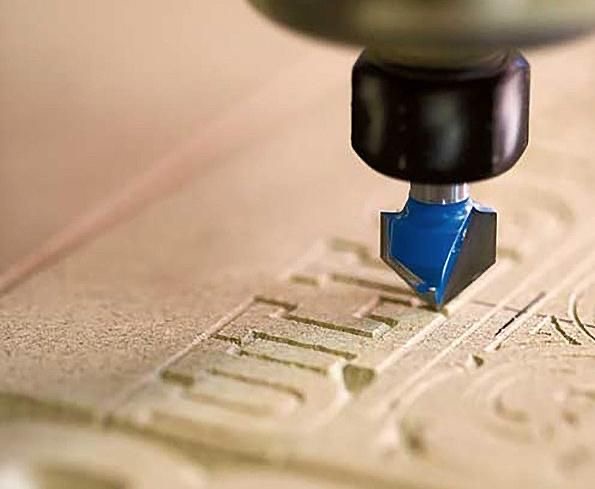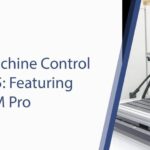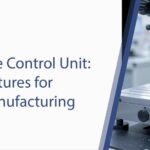
Impact of CNC Technology on Workforce Development
Redefining Human Potential in the Age of Automation
The rise of CNC (Computer Numerical Control) technology has done more than revolutionize manufacturing—it has redefined what it means to be part of the modern industrial workforce.
Where once manual craftsmanship dominated, precision automation and digital control now lead the way. As CNC systems grow smarter and more connected, they continue to reshape not only production lines but also the people who power them.
This evolution presents a dual transformation: companies achieve unparalleled precision and productivity, while workers evolve into digitally skilled professionals capable of operating, programming, and maintaining complex systems. The result is an industry that’s not replacing human talent—it’s elevating it.
Enhanced Workforce Skills: From Manual Labor to Digital Expertise
CNC technology has fundamentally changed the skills required in manufacturing. Instead of relying solely on physical labor, modern operators and technicians now combine technical precision with software proficiency.
The Shift in Skill Requirements
- Programming and coding skills: Workers must understand G-code, CAD/CAM software, and automated workflows.
- Technical literacy: Operators need to interpret design blueprints, machine parameters, and digital dashboards.
- Cross-disciplinary understanding: Collaboration between mechanical, electrical, and software engineering disciplines is becoming the norm.
As a result, manufacturing professionals are no longer limited to machine operation—they are data interpreters, process optimizers, and innovation enablers.
Increased Efficiency and Precision: Empowering Smarter Roles
One of the defining impacts of CNC systems is the elimination of repetitive, low-value manual work. Automation ensures that machines handle the repetitive precision tasks, while employees focus on higher-value operations such as process optimization and product innovation.
How Efficiency Transforms the Workforce
- CNC machines deliver repeatable accuracy at micro-level tolerances.
- Operators supervise multiple machines simultaneously, enhancing output without increasing headcount.
- Workers develop analytical skills to fine-tune production for quality and speed.
In essence, CNC technology shifts human effort from physical execution to strategic control, building a workforce that drives quality through intelligence rather than routine.
Automation and Streamlined Operations: A Safer, Smarter Workplace
Automation has become synonymous with industrial safety and operational excellence. CNC-controlled environments dramatically reduce exposure to hazardous conditions, enabling workers to transition from manual operators to system supervisors.
The Benefits of Automation for the Workforce
- Reduced physical risk: Less manual handling of sharp tools or heavy components.
- Operational efficiency: Automated cycles allow continuous production with minimal intervention.
- Enhanced safety systems: Modern CNCs integrate sensors, interlocks, and AI-based monitoring for incident prevention.
By integrating robotics with CNC systems, manufacturers create hybrid workspaces where humans and machines collaborate seamlessly. This not only raises safety standards but also encourages human-machine synergy, where workers act as decision-makers supported by smart automation.
Diversified Job Opportunities: The Rise of New Manufacturing Careers
CNC technology has broadened the professional spectrum within the manufacturing ecosystem. It has introduced career paths that blend creativity, technology, and precision engineering.
Emerging Job Roles
- CNC Programmers: Develop and optimize G-code for efficient machining.
- Design Engineers: Use CAD software to design components tailored for CNC production.
- Maintenance Technicians: Manage predictive maintenance using IoT-based tools and diagnostics.
- Automation Specialists: Integrate robotics, AI, and data analytics for end-to-end smart manufacturing.
The convergence of CNC technology with Industry 4.0 has created opportunities not only for technical experts but also for creative problem solvers who can adapt digital capabilities to production realities.
Driving Technological Advancements and Continuous Innovation
CNC systems do more than increase efficiency—they inspire innovation. As machines become connected through cloud platforms and IoT ecosystems, the boundaries between digital design and physical manufacturing blur.
How CNC Drives Innovation
- Integration with AI and machine learning allows systems to self-optimize cutting speeds and feed rates.
- Real-time data analytics improves decision-making and predictive maintenance.
- Digital twins simulate production before machining begins, enhancing accuracy and reducing waste.
These technologies demand a workforce that’s comfortable with data, collaboration, and continuous learning. The manufacturers who invest in upskilling their teams today will lead tomorrow’s industrial breakthroughs.
Future Outlook: Building a Skilled, Adaptive Workforce
The next generation of CNC professionals will not only operate machines—they will program ecosystems. As automation integrates with AI, additive manufacturing, and robotics, employees must develop both technical fluency and adaptive intelligence to remain competitive.
Preparing for the Future
- Encourage continuous education through digital training platforms.
- Build partnerships with technical schools and universities for CNC certification.
- Integrate apprenticeship programs that combine theory with hands-on experience.
Workforce development is now an ongoing cycle of learning, adaptation, and innovation. Those who embrace this shift will find CNC technology not as a disruptor—but as a career accelerator.
Conclusion: Human Ingenuity in a CNC-Driven World
The impact of CNC technology on workforce development extends far beyond automation. It represents a transformation in how humans interact with machines, blending creativity, logic, and precision. With CNC systems handling the repetitive and mechanical, human workers are free to focus on innovation, optimization, and strategic oversight.
At Radonix, with over 16 years of experience in designing CNC control technologies, we understand that progress in manufacturing begins with empowered people. Our mission is to provide intelligent CNC solutions that not only enhance production but also inspire a more skilled, adaptable, and forward-thinking workforce.
Contact Us:
- E-Mail: info@radonix.com
- Phone: +90 (553) 920 5500








